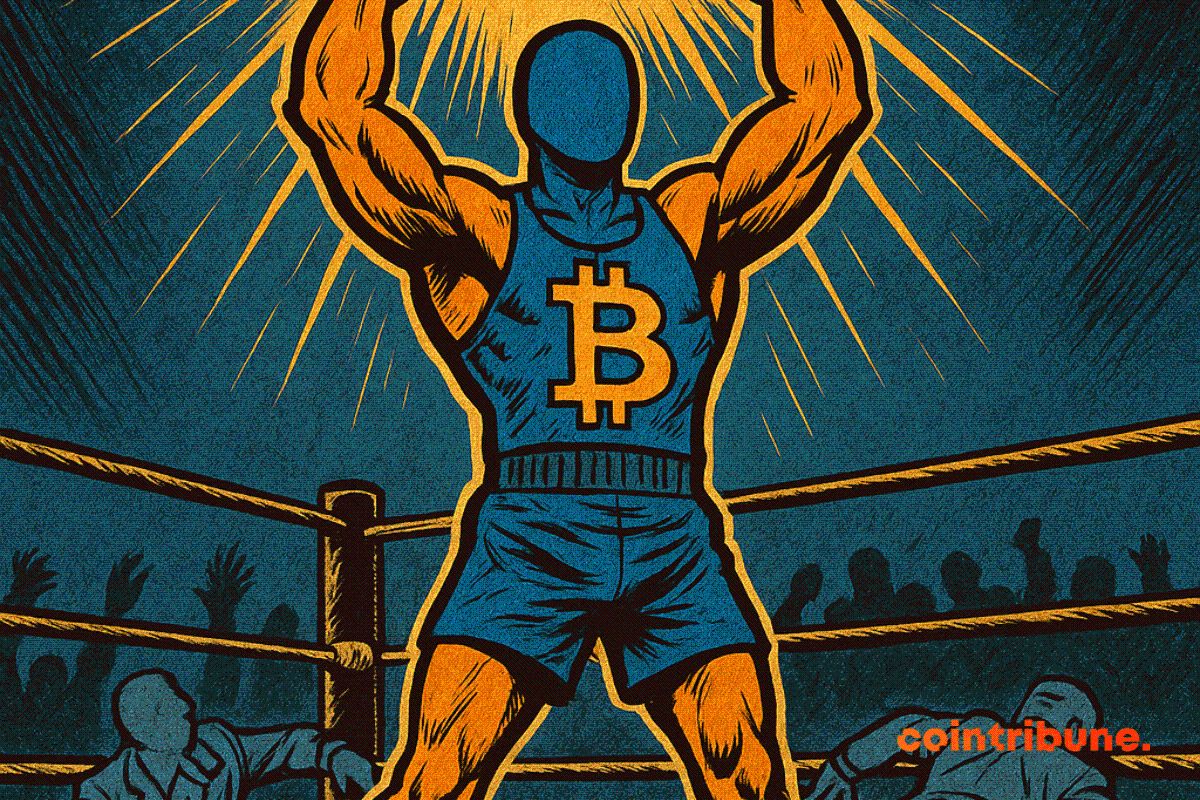Bitcoin's Store-of-Value Resilience: Decoding Miner-Driven Signals and Hashrate Dynamics in a Devaluing World
- Bitcoin's fixed supply and miner-driven hashrate growth position it as a hedge against fiat devaluation, with U.S. miners controlling 31.5% of global hashpower in 2025. - Institutional adoption and $54.97B in ETF inflows highlight Bitcoin's shift from speculative asset to strategic portfolio cornerstone. - Max Keiser argues Bitcoin's scarcity and 2024 halving create inevitable demand, while geopolitical risks like "hash wars" could reshape mining hubs. - Rising hashrate resilience and 92% profit holdings
In an era where traditional assets face relentless erosion from inflation, geopolitical instability, and unsustainable debt, Bitcoin's emergence as a digital store of value has gained unprecedented traction. The cryptocurrency's unique properties—fixed supply, decentralization, and resistance to devaluation—position it as a counterweight to fiat currencies. Yet, the true strength of Bitcoin's value proposition lies not just in its scarcity but in the signals generated by its mining ecosystem. Miner-driven price dynamics and network hashrate trends are now critical indicators of Bitcoin's long-term trajectory, offering investors a roadmap to navigate the devaluing global economy.
The Hashrate as a Barometer of Confidence
Bitcoin's network hashrate, a measure of computational power securing the blockchain, has surged by 47% in 2025, reaching 902 exahashes per second (EH/s) by August. This growth reflects a surge in institutional and corporate participation, particularly in the U.S., where listed miners now control 31.5% of global hashpower. The hashrate's resilience amid volatility—peaking at 1,239 EH/s in August and dipping to 700 EH/s during seasonal disruptions—underscores the adaptability of the mining industry.
The interplay between hashrate and difficulty adjustments is a self-regulating mechanism that maintains Bitcoin's 10-minute block time. For instance, the upcoming 4.97% difficulty drop, one of the steepest reductions of the year, signals a temporary reversion in mining intensity. However, the long-term upward trend in hashrate, despite these fluctuations, suggests growing confidence in Bitcoin's economic viability. Miners, as the most committed participants in the network, are effectively betting on Bitcoin's future value.
Miner-Driven Price Signals: A New Paradigm
Bitcoin miners are not passive actors; they are the backbone of the network's security and a key driver of price dynamics. In 2025, miner revenue remains heavily reliant on block subsidies, with transaction fees contributing less than 1% of total rewards. This direct correlation between Bitcoin's spot price and miners' earnings (measured as hashprice) creates a feedback loop: when prices dip, miners face margin pressures, leading to sell-offs that exacerbate downward trends. Conversely, sustained price increases incentivize further investment in mining infrastructure, reinforcing network security.
The U.S. mining industry, particularly in Texas, exemplifies this dynamic. Low energy costs and AI integration have made Texas a global mining hub, but summer heatwaves and grid constraints occasionally force operational curtailments. These seasonal dips in hashrate highlight the interdependence between energy markets and Bitcoin's price. Yet, the broader trend—rising hashrate and institutional adoption—points to a maturing ecosystem where miners are less sensitive to short-term volatility.
Max Keiser's Bullish Thesis: A Macroeconomic Imperative
Max Keiser, a vocal advocate for Bitcoin's role as a store of value, argues that the cryptocurrency is the inevitable outcome of a world drowning in debt. With U.S. interest payments exceeding $1 trillion in 2025, governments are compelled to pursue inflationary policies to service their obligations. This creates a perfect storm for fiat currencies, eroding purchasing power and driving demand for assets like Bitcoin , which cannot be inflated.
Keiser's analysis ties miner behavior to macroeconomic trends. He emphasizes that miners are the most reliable price signal because their operations are inherently long-term. The 2024 halving, which reduced Bitcoin's issuance by 50%, intensified structural scarcity, while the 47% hashrate surge in 2025 reflects institutional confidence. The integration of mining with AI and high-performance computing (HPC) further strengthens Bitcoin's flywheel of value, creating a self-reinforcing cycle of security and adoption.
Keiser also warns of geopolitical risks, such as the 15% hashrate drop in June 2025 linked to U.S. military actions in Iran. These events underscore the growing strategic importance of hashpower, with nations potentially engaging in a “hash war” to control mining hubs. The U.S., with 30% of the global hashrate, is positioned to dominate this landscape, but Keiser cautions that mining hubs like Texas could become geopolitical vulnerabilities.
Strategic Positioning: A Hedge Against Systemic Devaluation
For investors, the convergence of miner-driven signals and macroeconomic tailwinds presents a compelling case for early positioning in Bitcoin. The $54.97 billion in net inflows into U.S. spot Bitcoin ETFs in 2025 alone signals a shift in how institutions view the asset—from speculative to strategic. With 294 entities, including corporations and sovereigns, holding 3.67 million BTC (92% in profit), Bitcoin is no longer a niche play but a cornerstone of diversified portfolios.
The Gini coefficient, which measures Bitcoin's ownership concentration, also reveals a growing dominance of “strong hands”—large institutional and corporate entities. This consolidation reduces volatility and creates a price floor, making Bitcoin an attractive hedge against fiat depreciation. As central banks and governments continue to devalue their currencies, Bitcoin's fixed supply of 21 million coins becomes an increasingly scarce and valuable asset.
Conclusion: The Inevitability of Bitcoin's Dominance
Bitcoin's store-of-value proposition is not a speculative bet but a logical response to the devaluing global economy. Miner-driven price signals and hashrate dynamics provide a clear lens through which to view its long-term trajectory. As institutional adoption accelerates and macroeconomic pressures mount, Bitcoin's role as a hedge against systemic devaluation will only strengthen. For investors seeking to preserve and grow their wealth in an era of fiat erosion, strategic, early positioning in Bitcoin is not just prudent—it is imperative.
Disclaimer: The content of this article solely reflects the author's opinion and does not represent the platform in any capacity. This article is not intended to serve as a reference for making investment decisions.
You may also like
Crypto cards have no future
Having neither the life of a bank card nor the problems of one.

MiCA regulation poorly applied within the EU, ESMA ready to take back control

$674M Into Solana ETF Despite Market Downturn
